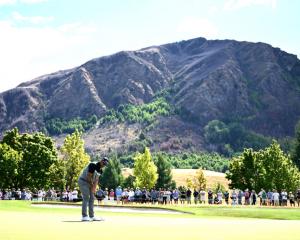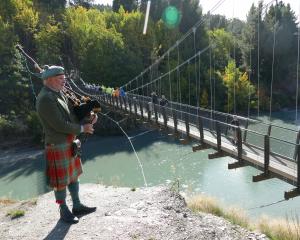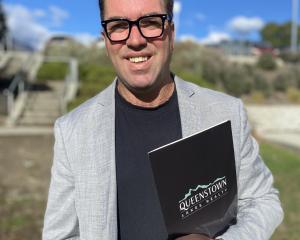The Queenstown Lakes District Council is not going to buy Wanaka's Sticky Forest for a reserve but it appears the trees are not quite out of bounds to the public if they respect the owners' rights.
The council on Friday adopted the 58ha Kirimoko Block plan change and 350-lot structure plan, which rejects Lake Wanaka Cycling's submission the forest be turned into a 8.7ha public recreation reserve.
Commissioners David Collins, Leigh Overton and Gillian McLeod said in their March 14 decision they did not have the power to recommend the forest be taken as council reserve ‘‘because the area of forested land is in excess of the reserves contributions being required as part of the development of the Kirimoko Block, and is not being offered by the owners of the land''.
Two of the forest landowners, Scott Murray, of Christchurch, and Steve Schikker, of Wanaka, indicated yesterday they might continue to tolerate crosscountry cycling in the forest, although the forest's future is uncertain and depends mostly on what Mr Murray and a third landowner, Cliff Hammond, of the United States, decide to do with it.
Mr Hammond's views could not be obtained yesterday.
His neighbours said none of them wanted to be held responsible for accidents and injuries in the forest.
‘‘So long as they don't sue if they break their leg. They use it at their peril,'' Mr Murray said.
The three landowners retain the rights to cut down the pine forest whenever it suits but are otherwise restricted in what they can do on the land by a prohibitive no-build zone imposed by the approved Kirimoko structure plan.
The forest is on just three of the 13 lots in the Kirimoko Block on Aubrey Rd and is in the no-build zone. Most of the land has been given low density development rights to 350 lots and will be crossed by an approved walkway linking Aubrey Rd to Peninsula Bay.
Lake Wanaka Cycling Inc president Willem Groenen said yesterday that committee members would be disappointed but the club would now be putting all its hopes on being able to retain the neighbouring, larger Plantation Forest and had started work on the council-approved Lismore Bike Park project.
The club could not afford to buy the forests itself.
‘‘We are mainly lobbying the council to show what people are appreciating and that they are making good use of the area,'' Mr Groenen said.
Results from a club survey of forest users over Easter had not been collated yet, he said.
Mr Murray and Mr Schikker said the decision did not really change the situation they had been in for some years.
‘‘I don't want to see a public park that I privately own . . . Ideally it would be great for the council to consider the long-term use of the land . . . If it's there for recreation purposes and they put money towards it, that would be great,'' Mr Murray said.
He did not think he could stop cyclists. ‘‘You put up a fence and they are going to climb over it or cut a hole in it. God bless them. I would too,'' he said.
Mr Schikker said he knew everyone loved the crosscountry trails but he had concerns about the illegal structures, built by a minority of the mountainbikers. He does not want cyclists using his private driveway as a cycle track.
Wanaka Community Board chairman Lyal Cocks confirmed Plantation Forest negotiations were still on the table.
‘‘The community board has indicated previously there is an important principle of securing access either through lease or procurement. But that would have to go back to the community board...
"The biggest issue coming up is clarifying what will come from the Treaty settlement office,'' Cr Cocks said on Friday.
The Office of Treaty Settlements is administrating Plantation Forest until a Maori Land Court order is made to identify the original descendants of Maori in the Hawea-Wanaka area. The land will revert to private ownership once the court order is made.
Lake Wanaka Cycling Inc and the Queenstown Lakes District Council have begun efforts to retain public access there.












